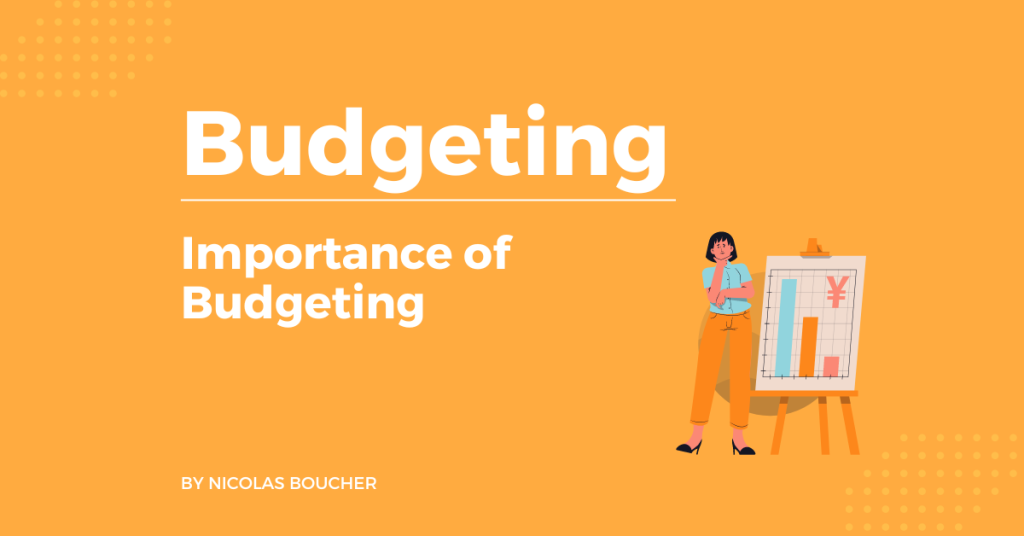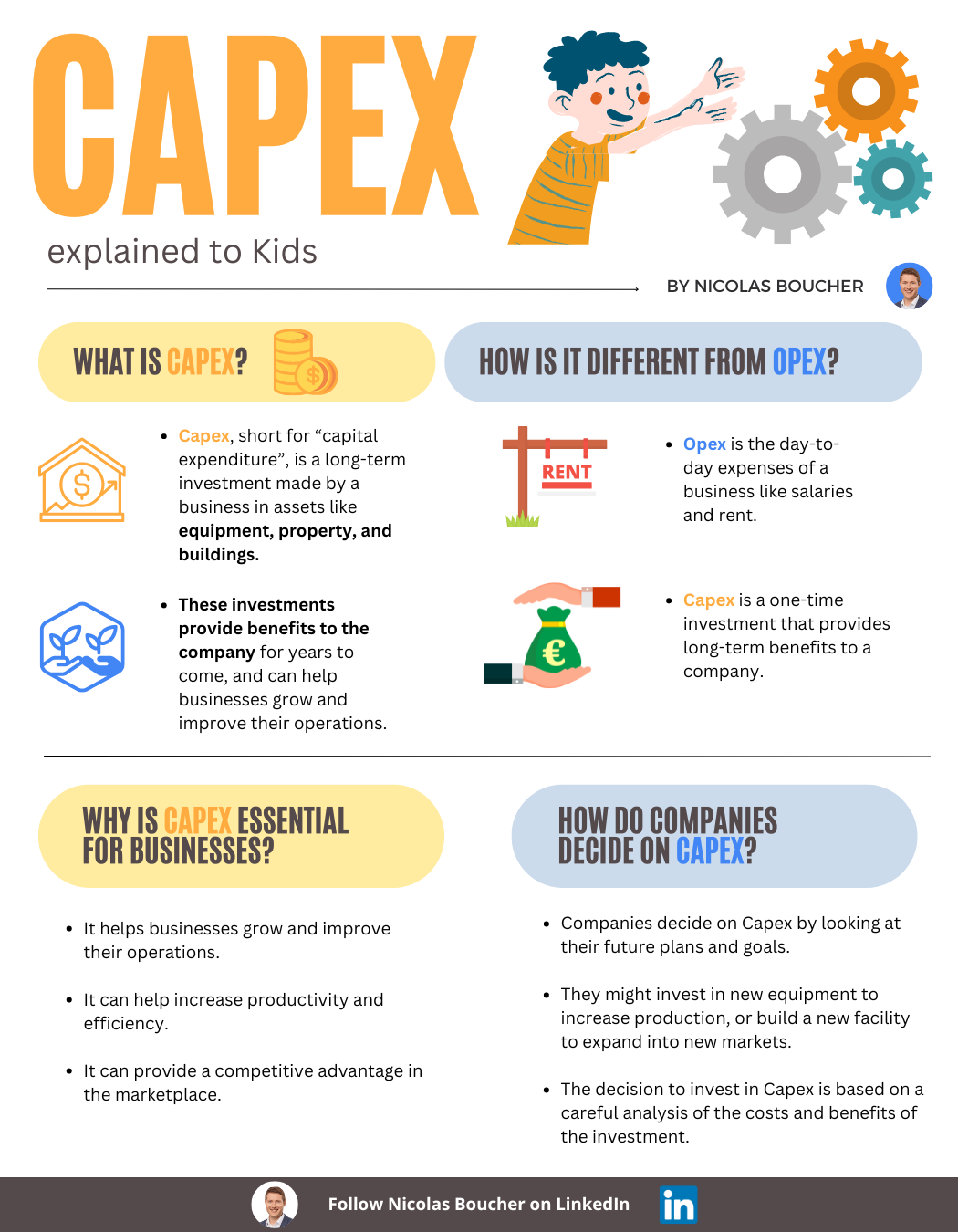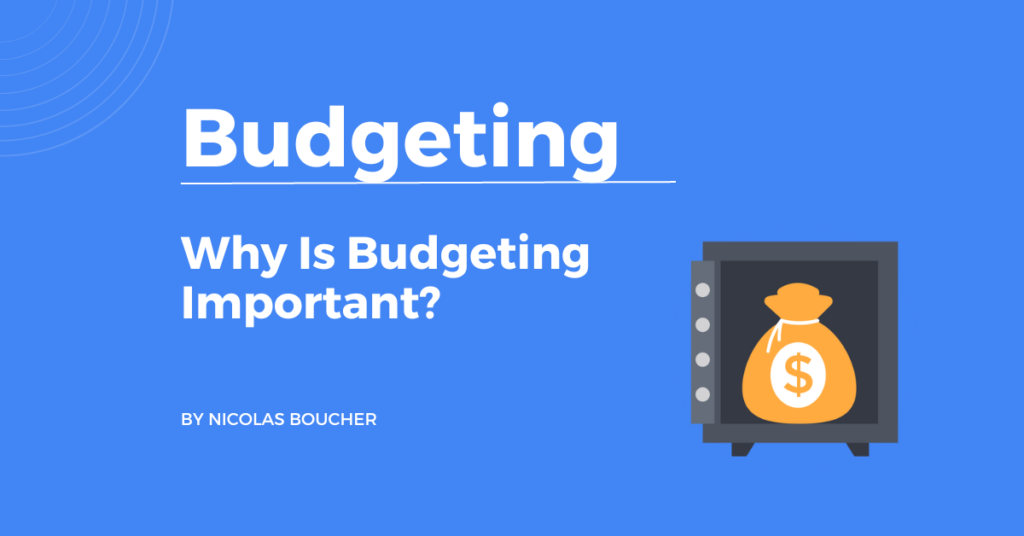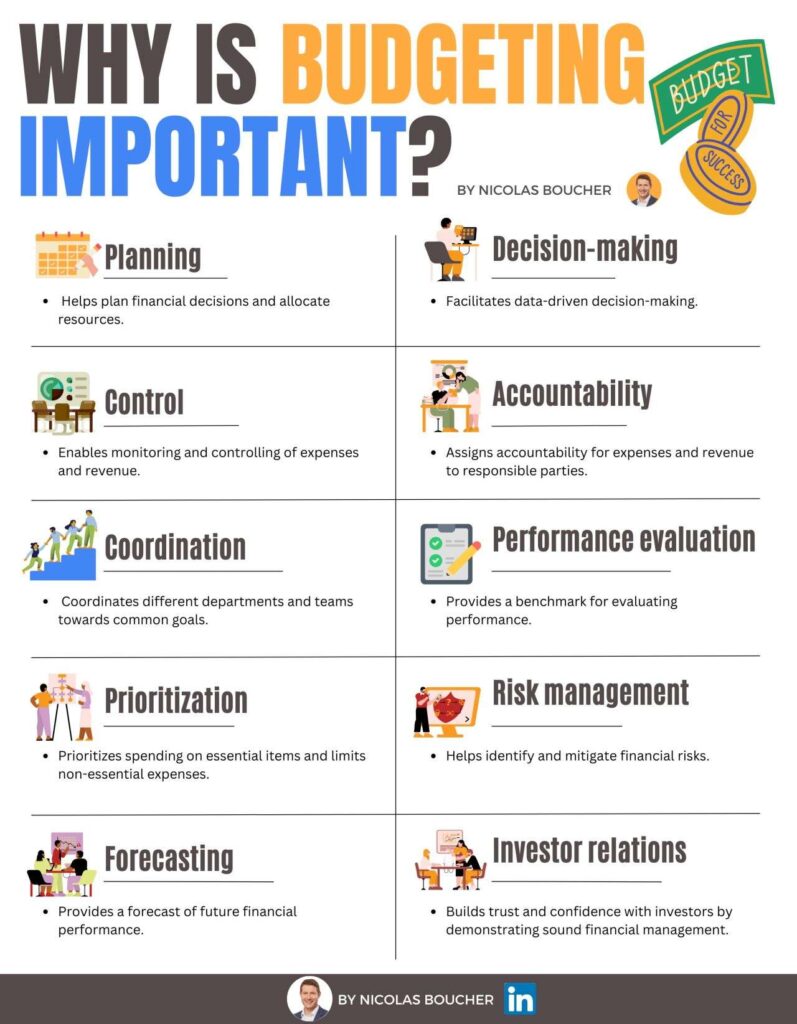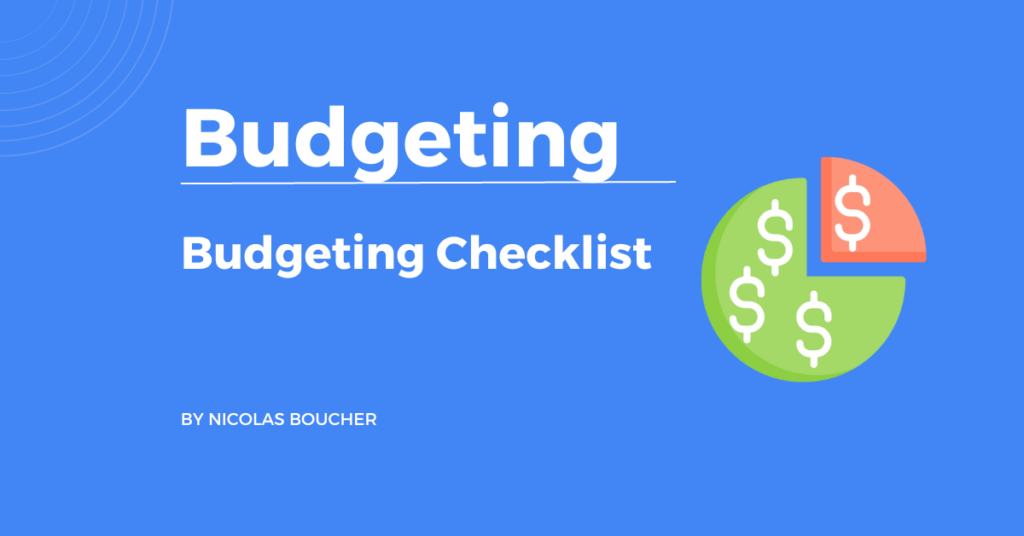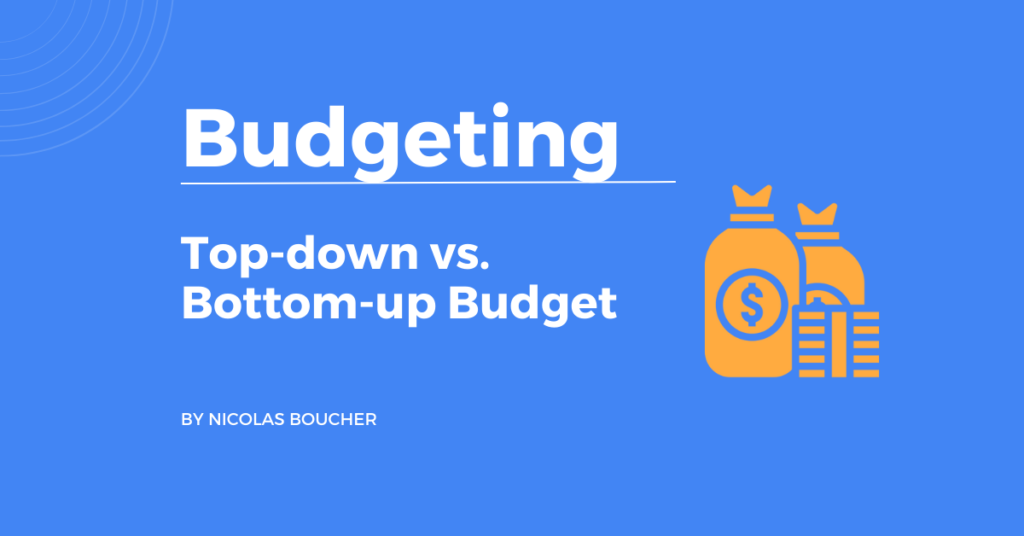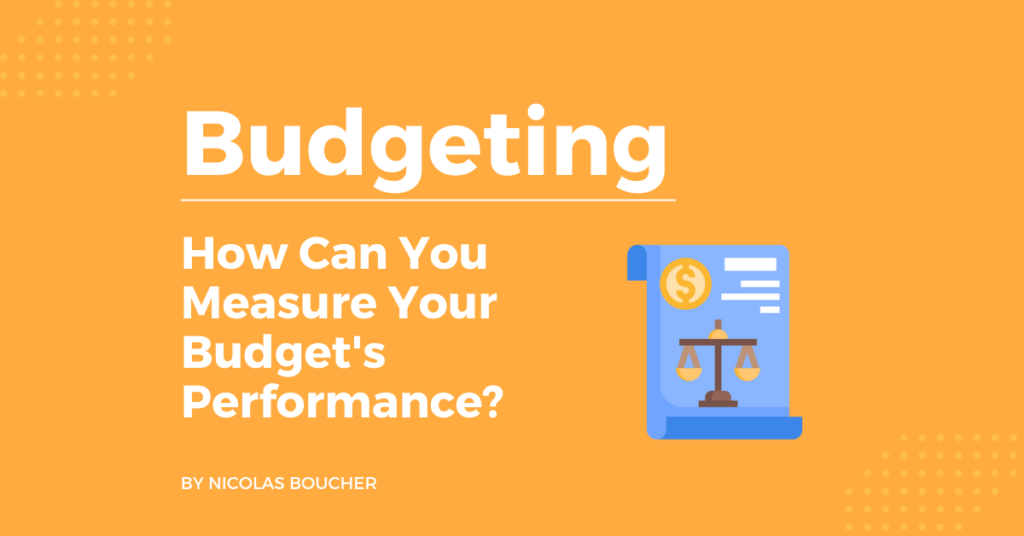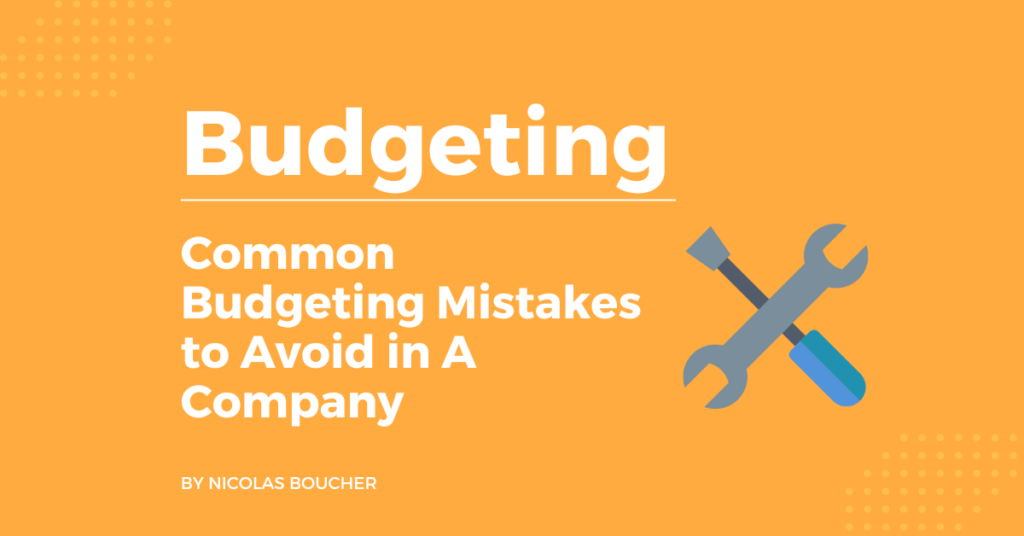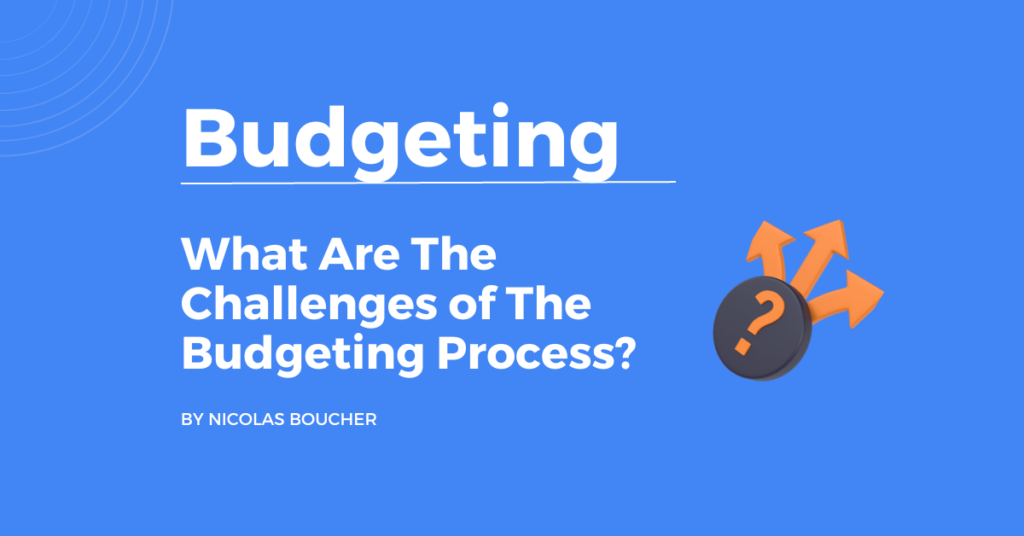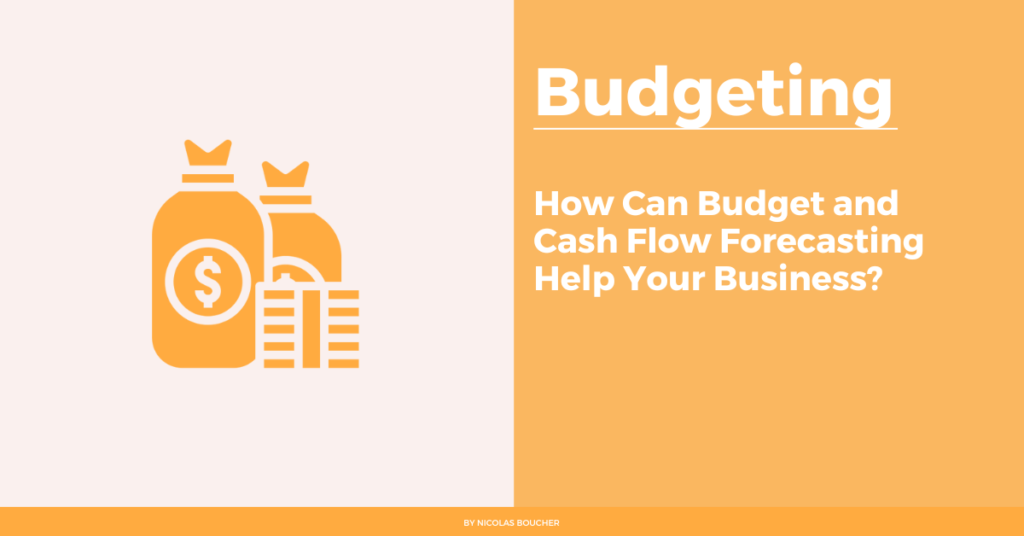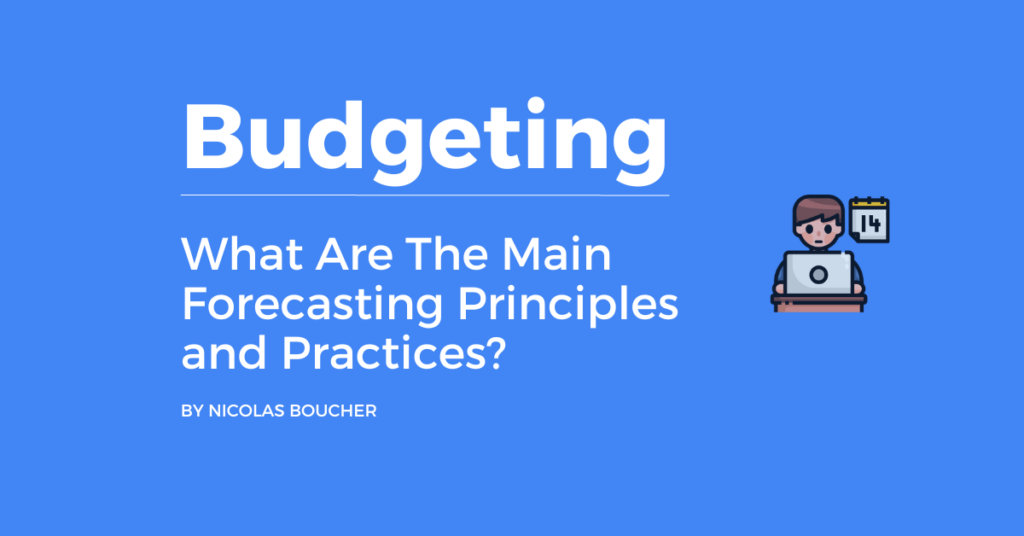The budgeting process can often be overwhelming and require a lot of hours of work.
However, it is a crucial process in every company.
It helps you to avoid overspending, plan your goals, and prevent entering into new debts.
In this blog post, I will dive into the importance of budgeting and the top 10 scenario analysis frameworks.
But before that, I have prepared something for you…
Supercharge your FP&A Career
Are you feeling stuck in your career?
Do you feel like the others are progressing and you are stuck in the same place?
What do you plan to do about it?
Are you ready to take the next big step and earn your deserved promotion?
You can do that with my “[Become A High Performing Finance Professional]” course based on my 14 years of experience.
In this course, I personally share the insider secrets that propelled me to top finance leadership roles quickly, securing better raises faster than anyone around me.
Here’s what you will learn with my course:
- How to analyze variances
- How to perform quick analysis
- How to make your reporting faster
- How to be a better business partner
- How to make Excel and PowerPoint work for you
And all that is packed into 80+ on-demand videos, which you can rewatch whenever you want
[Get this course] and take your FP&A career to a whole new level.
10 Main Advantages of Budgeting
Here is why budgeting is crucial in every company:
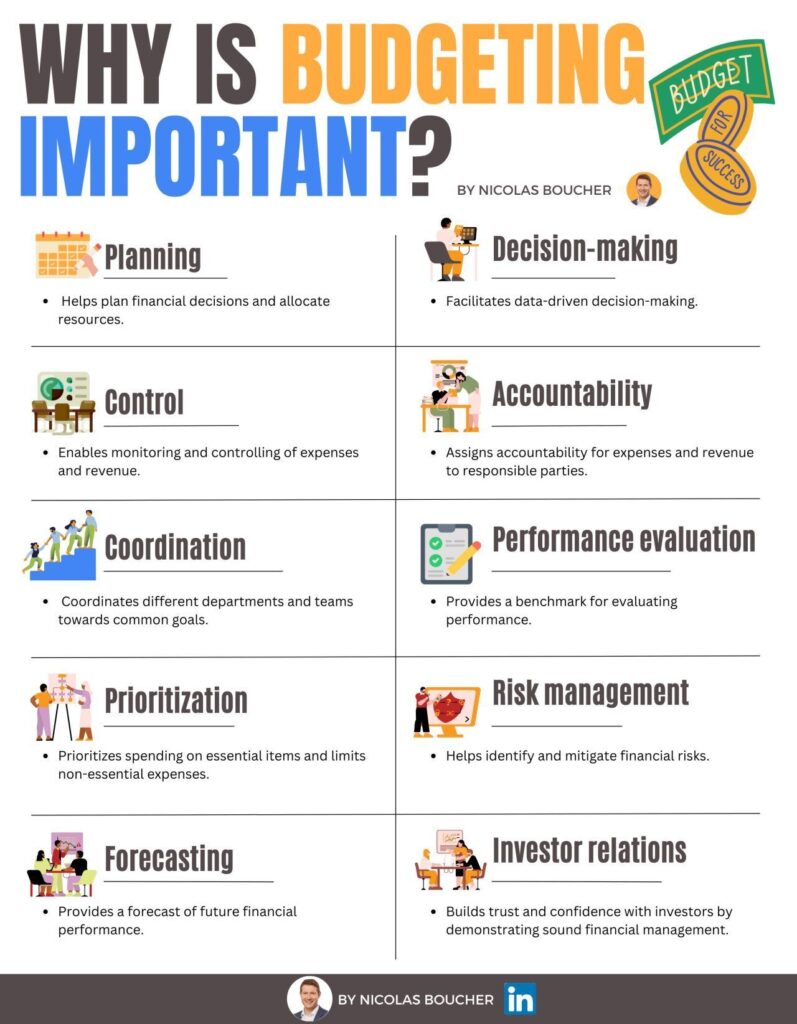
#1: Planning
It helps plan financial decisions and allocate resources.
Imagine you want to grow your activity by 50%. How can you do it if you don’t plan a correct headcount ramp-up?
#2: Control
It enables monitoring and controlling of expenses and revenue.
A budget is a reference against which you can track your financial performance. Without a budget, you will have a harder time setting benchmarks.
#3: Coordination
It coordinates the different departments and teams towards common goals.
For me, the budgeting period is a time to consider the future and how you will achieve your objectives with the other teams.
As a finance person, you need to coordinate and facilitate these discussions.
#4: Prioritization
It prioritizes spending on essential items and limits non-essential expenses.
This is the time when managers can decide where to spend the money and give instructions to their team.
#5: Forecasting
I didn’t put it first because you could forecast without having to do steps 1 to 4.
For me, the financial figures should not be the only end goal of a budget, but more “how are we going to get there.”
#6: Decision-making
It facilitates data-driven decision-making.
This is the only period in the year when you set time aside to build a business case on which you can make decisions.
#7: Accountability
It assigns accountability for expenses and revenue to the different stakeholders.
If done well, budgeting is a great management tool for driving performance!
#8: Performance Evaluation
Most companies use budgets as a way to assess the performance of their teams and units.
From there will be the bonus calculated.
#9: Risk Management
It helps identify and mitigate financial risks by looking into the future.
#10: Investor relations
Whether you are a listed company or a small company, your investors still need to know where you are going.
Having a budget helps build trust and confidence with investors by demonstrating sound financial management.
10 Scenario Analysis Frameworks
Here are 10 different methods, with instructions and an illustrative example.
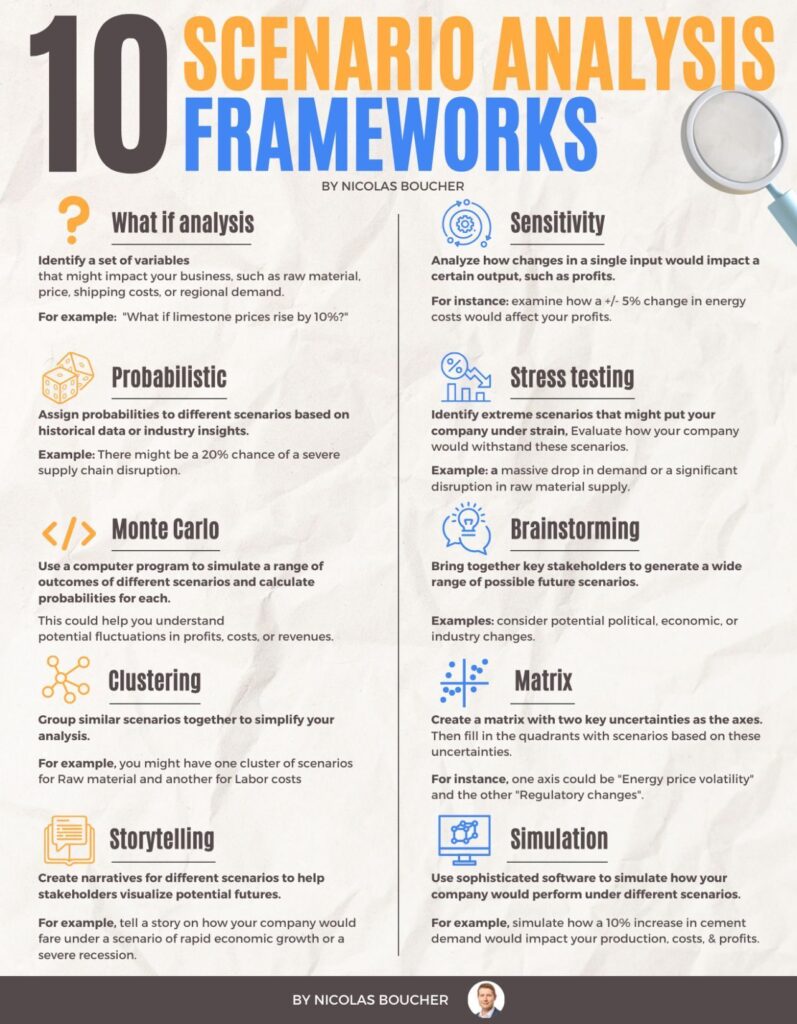
1. “What If” Analysis
Identify a set of variables that might impact your business, such as raw material, price, shipping costs, or regional demand.
For example: “What if limestone prices rise by 10%?”
2. Sensitivity
Analyze how changes in a single input would impact a certain output, such as profits.
For instance, examine how a +/- 5% change in energy costs would affect your profits.
3. Probabilistic
Assign probabilities to different scenarios based on historical data or industry insights.
Example: There might be a 20% chance of a severe supply chain disruption.
4. Stress testing
Identify extreme scenarios that might put your company under strain, and evaluate how your company would withstand these scenarios.
Example: a massive drop in demand or a significant disruption in raw material supply.
5. Monte Carlo
Use a computer program to simulate a range of outcomes of different scenarios and calculate probabilities for each.
This could help you understand potential fluctuations in profits, costs, or revenues.
6. Brainstorming
Bring together key stakeholders to generate a wide range of possible future scenarios.
Examples: consider potential political, economic, or industry changes.
Create narratives for different scenarios to help stakeholders visualize potential futures.
7. Clustering
Group similar scenarios together to simplify your analysis.
For example, you might have one cluster of scenarios for raw materials and another for Labor costs.
8. Matrix
Create a matrix with two key uncertainties as the axes. Then, fill in the quadrants with scenarios based on these uncertainties.
For instance, one axis could be “Energy price volatility” and the other “Regulatory changes.”
9. Storytelling
For example, tell a story on how your company would fare under a scenario of rapid economic growth or a severe recession.
10. Simulation
Use sophisticated software to simulate how your company would perform under different scenarios.
For example, simulate how a 10% increase in cement demand would impact your production, costs, & profits.
Summary
Budgeting is key for any business aiming for growth and stability. It helps you plan wisely, control costs, and allocate resources.
Good budgeting allows you to set goals, prioritize spending, and coordinate efforts across departments.
It also makes decision-making easier, holds people accountable, and evaluates performance.
Plus, budgeting helps manage risks and keeps investors confident.
By implementing different budgeting methods and scenario analyses, you can better forecast and prepare for various financial situations, keeping your company strong and competitive.
Reminder
Elevate your FP&A skills or move effortlessly to FP&A with my [tried and tested course]. Save 30% and make yourself an irreplaceable FP&A professional.
FAQ
Q: Why is budgeting important for a company?
A: Budgeting helps plan financial decisions, control expenses, and allocate resources effectively. It sets benchmarks, prioritizes spending, and coordinates efforts across departments to achieve common goals.
Q: How does budgeting help in decision-making?
A: Budgeting provides a structured approach to evaluate financial information and build business cases, enabling informed decisions based on accurate data.
Q: What are the advantages of Zero-Based Budgeting (ZBB)?
A: Zero-based budgeting ensures every expense is justified, making it ideal for cost reduction. It encourages careful evaluation of needs and helps eliminate unnecessary spending, though it can be time-consuming.
Q: How can budgeting improve investor relations?
A: A budget shows sound financial management, building trust and confidence with investors. It demonstrates that the company has a clear financial plan and is prepared for future challenges.
Q: What is the role of scenario analysis in budgeting?
A: Scenario analysis helps prepare for different future situations by evaluating how various factors might impact the business. It identifies risks, tests resilience under extreme conditions, and develops strategies to mitigate those risks, using methods like “What If” analysis, sensitivity analysis, and Monte Carlo simulations.

